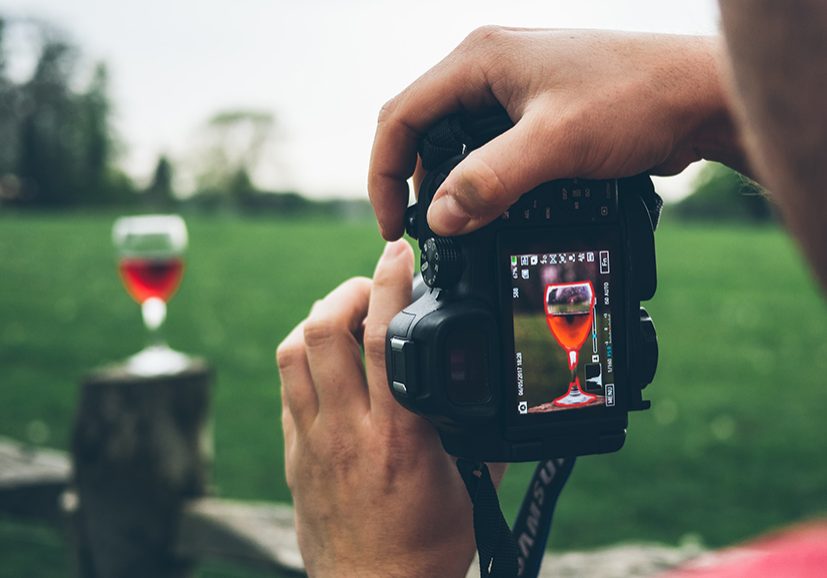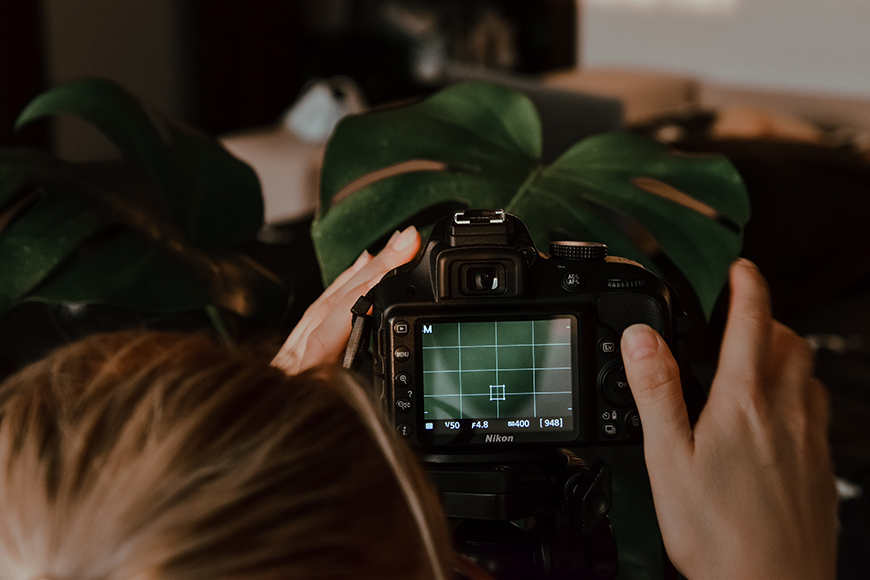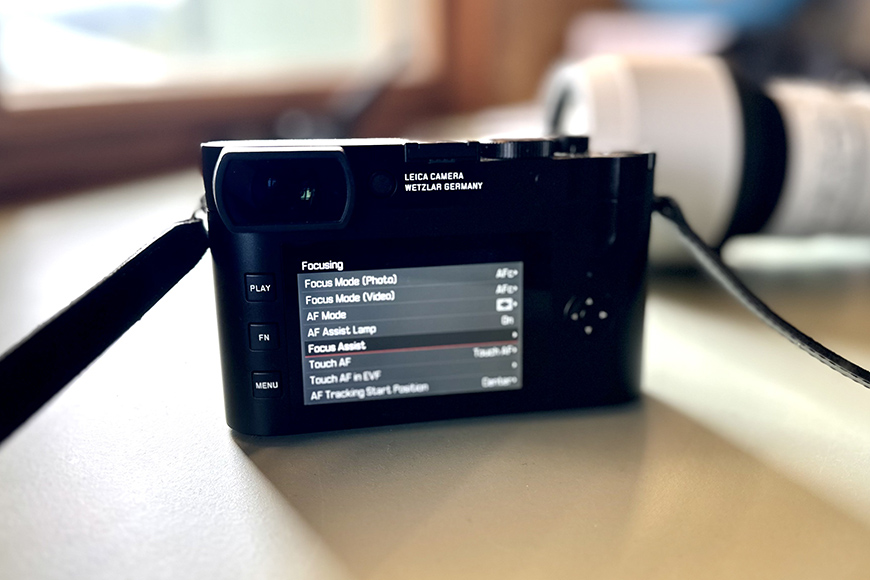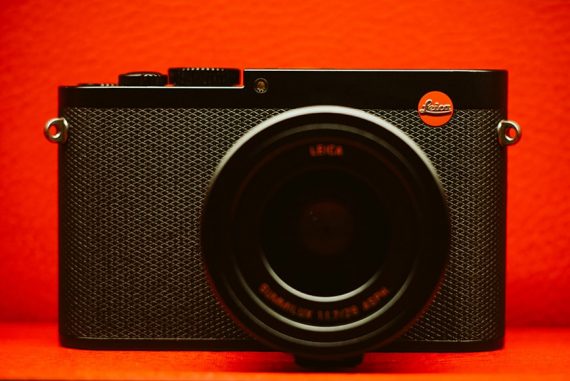
Focus Peaking: How to Use it Properly on All Cameras
One way to improve your manual focusing success rate is by using Focus Assist. It's also a way to get more photos in focus if you have poor eye-sight.
Learn | By Jeff Collier
Focus peaking is an extremely useful technique to know about when it comes to getting the right parts of your image in focus.
It used to mainly be a feature of video cameras, but nowadays it’s standard on many DSLRs and mirrorless digital cameras.
And who doesn’t need a little extra help with focusing? All of us photographers have been there, squinting at the rear screen, trying to figure out if we’ve got our focus right.
This guide will tell you all about what focus peaking is, plus when and how to use it.
Table of Contents
What is Focus Peaking?
So, what is focus peaking?
It’s a real-time, visual representation on digital cameras and video cameras of what is in focus when you’re using manual focus mode.
Focus peaking is a useful focusing aid that highlights high-contrast, sharply-focused areas and edges with a false-colour overlay (green, red, blue, yellow, etc).
It helps you, with speed and precision, to figure out before you shoot what in your composition is actually in focus, and what is not.
You can choose the colour yourself, according to your preferences and what would stand out most against the scene.
You can also set the focus peaking highlights sensitivity depending on what you are photographing, and how precise you need to be with your focus.
Peaking itself refers to the time when the largest amount of your image is in focus. That’s when you’ll see most of your chosen highlight colour on the image.
When Should You Use Focus Peaking?
Generally speaking, focus peaking is ideal for situations when it’s challenging for you to work out exactly what’s in focus when you are in a situation where you want to use manual focus.
So, for example, when you are shooting macro photography, or when there are a lot of fine, low-contrast details, like flowers, leaves, or embroidery.
You might want to use it in landscape photography to quickly find focus on distant objects, for example, the horizon, without having to zoom in on your image.
In low-light conditions, it can help you accurately capture slow-moving objects like grazing animals, or clouds moving across the sky.
Also if, you use manual focus only or vintage manual lenses, they won’t have automatic focus, so focus peaking will maximise your chances of getting a well-composed image with the right elements in focus.
Focus peaking is also a big help when using adapted lenses (or older manual lenses) on other brands’ camera bodies.
For example, you could use focus peaking when using a modern Sony a7 mirrorless camera combined with an adapted Leica lens.
You can also use it in a pinch if your Fujifilm X20 won’t focus – a specific issue that I’ve read about in forums in the past.
Focus peaking is great help with portrait photography – you can set make sure your subject’s eyes are in focus – and product photography – you can ensure the product is sharp.
Whatever you’re photographing, focus peaking is very handy to fine-tune your depth of field in manual mode on your camera.
Sometimes it’s hard to know exactly how your aperture will affect the final look of your image. With focus peaking you have a clear visual representation of which areas will be in focus, and which won’t, which can help with getting the sharpest focus.
Finally, not every photographer has great eyesight. Having a focus assist like focus peaking can really help photographers who can’t see as well as they would like, still get shots that are sharp and in focus in the right places.
Above all, it’s a focusing aid for any situations where you can’t rely on the camera’s autofocus in one way or another.
How Does Focus Peak Work?
Focus peaking works by detecting the edges and contours of objects within the frame where contrast is highest (indicating sharp focus) and overlaying a colored highlight on these areas.
The photographer adjusts focus until the desired part of the image is highlighted, indicating it’s in sharp focus.
Focus peaking is especially helpful in situations like macro or portrait photography where precise manual focusing is essential.
You’ll find focus peaking on most mirrorless cameras and some DSLR cameras too.
How Do You Use Focus Peaking?
Learn how to quickly enable and disable focus peaking function
You won’t always want to use focus peaking.
There are times when seeing colours all over your screen will be distracting rather than helpful. For example, when you are shooting an extremely shallow depth of field, the overlay colours will obscure too much of your composition.
Likewise, there are times you’ll want to access it quickly via your focus ring.
So, Make sure it’s set up properly on your camera, and that you know how to quickly turn it on or off.
Choose the best colour for focus peaking highlights
Your camera will give you a range of overlay colours to choose from.
You’ll need to experiment with these, as which ones you choose will come down both to personal preference, plus which overlay colours work best against the scenes you photograph.
For example, a green overlay won’t work well against grass or trees, but red or magenta will, as they’re on the opposite side of the colour spectrum.
Likewise, if you’re shooting bright yellow sunflowers, you’ll probably want to select blue or cyan as the overlay colour, so that it stands out.
The colours available for focus peaking can vary depending on the camera brand and model. However, common colours provided by many manufacturers include: red, blue, yellow, green and white.
Choose the sensitivity of focus assist
The focus peaking sensitivity, sometimes called the ‘level’, determines how much of your image is highlighted.
High sensitivity will show you all (or the majority of) the in-focus areas. Depending on your plane of focus, there could be a lot of overlay colour on your image.
Low sensitivity will only show the most in-focus areas of your shot, the sharpest of the sharpest. It’s for absolute precision, and there will be much less overlay colour on your screen.
Use split image or magnification to hone manual focus
Which of these you use will depend on which feature your camera has.
But, the point is that in order to get a great image, you cannot and should not rely only on focus peaking.
Focus peaking should be used as a starting point. You shouldn’t be finalising your composition with overlay colours covering it.
That will stop you from properly critically evaluating your scene from an artistic standpoint.
Having overlay colours everywhere doesn’t allow you to see the interaction of elements like colours and contrast, and interesting areas of light, all of which is crucial to making a good photo.
So, use focus peaking as a starting point to get your focus in the right area, then use split image or magnification to zoom in on your composition and fine-tune the focus.
What Cameras Have Focus Peaking? (+ How to Enable it)
Canon
Many Canon cameras, particularly in the EOS and PowerShot lines, offer focus peaking. All the latest Canon mirrorless cameras, including some Canon cameras for beginners, offer the focus peaking function.
To enable it, navigate to the camera menu settings, and look for an option labeled ‘Focus Guide’ or ‘MF Peaking Settings’. Enable it, and choose the color and level of peaking you prefer.
Nikon
Several Nikon cameras, such as the Z series (like Z6 and Z7), offer focus peaking.
You can typically find it under the ‘Custom Setting Menu’, then under ‘Movie Settings’ or ‘Controls’, and select ‘Peaking Highlights’. Adjust the sensitivity and color to your preference, then twist the focusing ring to access it.
Fujifilm
Fujifilm’s X-series cameras, like the X-T3 and X-T4, have focus peaking built in.
Go to the ‘AF/MF’ setting in the camera menu, and find the ‘MF Assist’ option. Select ‘Peaking’ and choose your preferred color and intensity.
Sony
Sony Alpha series mirrorless camera bodies like the A7 III and A7R IV provide focus peaking.
To enable it, head to the camera settings menu, then find ‘Peaking Level’ and ‘Peaking Color’ under the ‘Focus Assist’ section (often within the second tab of the camera settings). Set the level and color based on your requirements.
Panasonic
Panasonic’s Lumix line, including models like GH5 and S1, have focus peaking. To enable it, go to the ‘Custom’ wrench icon in the menu, select ‘Focus/Release Shutter’, and then ‘Peaking’. Adjust the ‘Peaking Level’ and ‘Peaking Color’ as needed.
Leica
Many Leica cameras, such as the Leica Q2, have focus peaking.
You can enable focus peaking highlights by going to the ‘Focus’ section of the main menu, and selecting ‘Focus Peaking’ in the ‘Manual Focus Settings’ submenu. Select the ‘On’ option and choose your preferred color.
(On some Leica models, it’s known as ‘Focus Assist’.)
Remember that instructions can vary slightly between different models within each brand, so always refer to your specific camera’s manual for exact instructions.
Olympus
Numerous Olympus cameras, particularly those in the OM-D series like the OM-D E-M1 Mark III, feature focus peaking.
To enable it, press the ‘Menu’ button and navigate to the ‘Gear’ submenu. Enter the ‘A’ (AF/MF) section and ensure ‘MF Assist’ is turned ‘On’. Below ‘MF Assist’, find and select ‘Peaking’. Set this to ‘On’ and choose your preferred color and intensity.
















